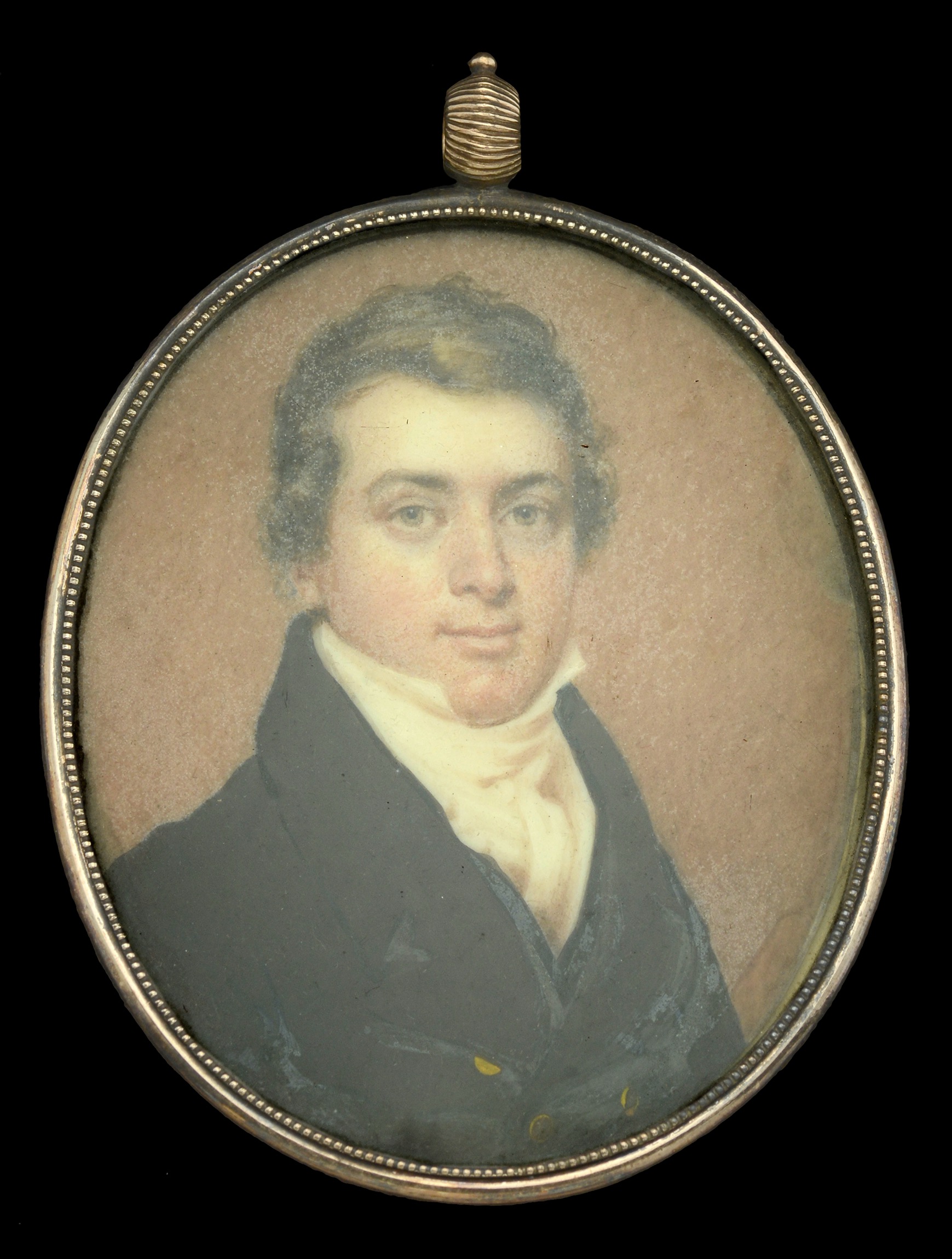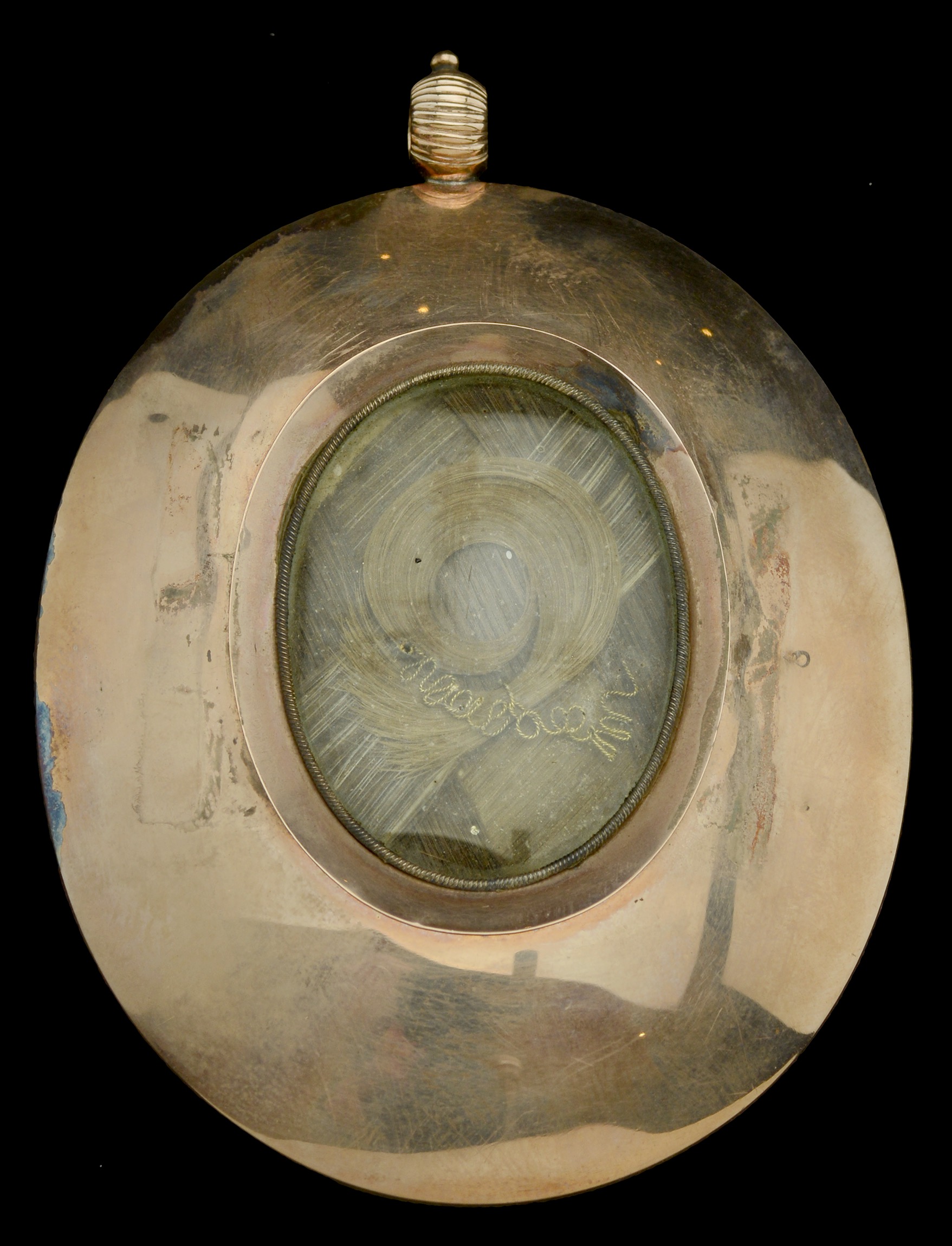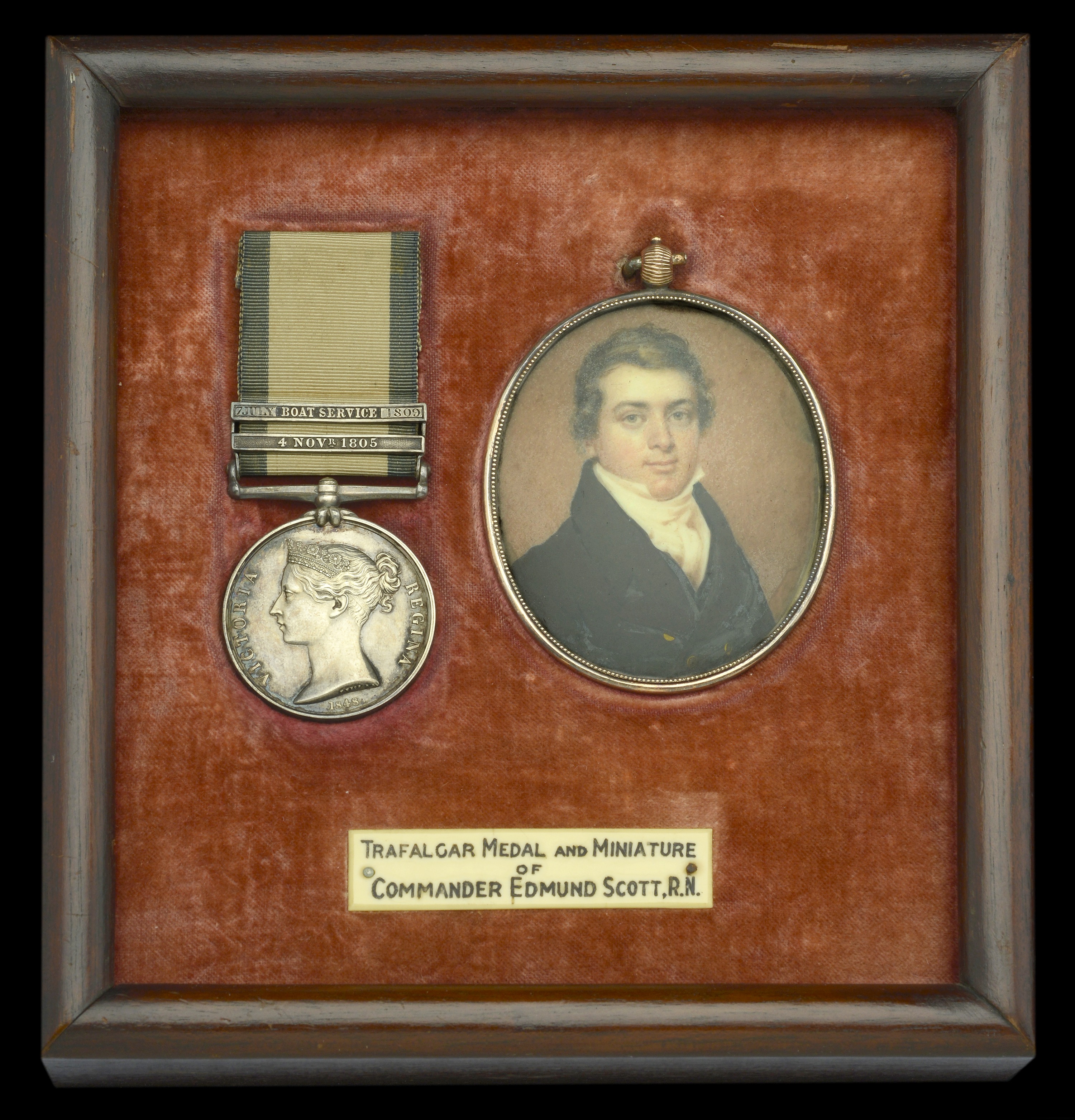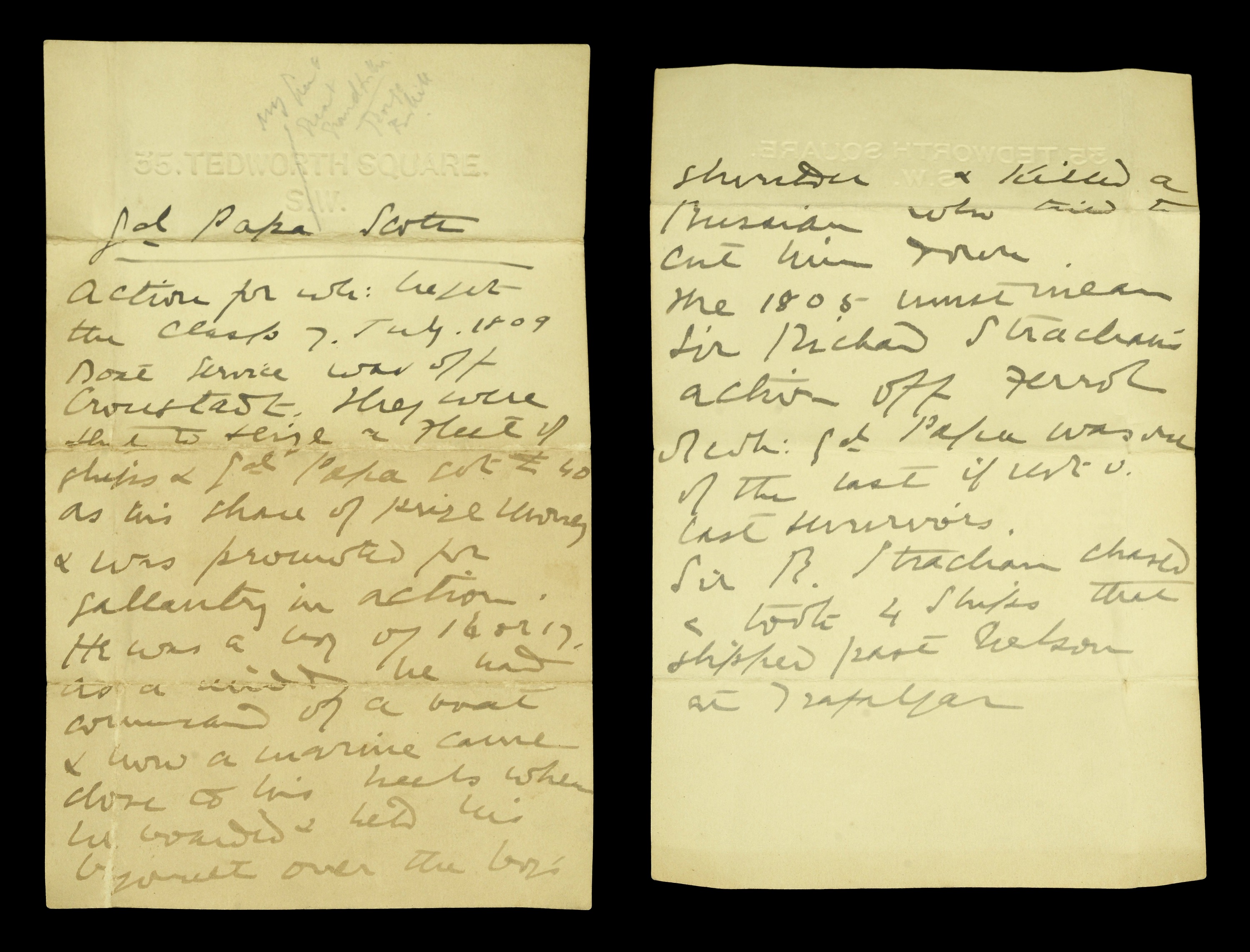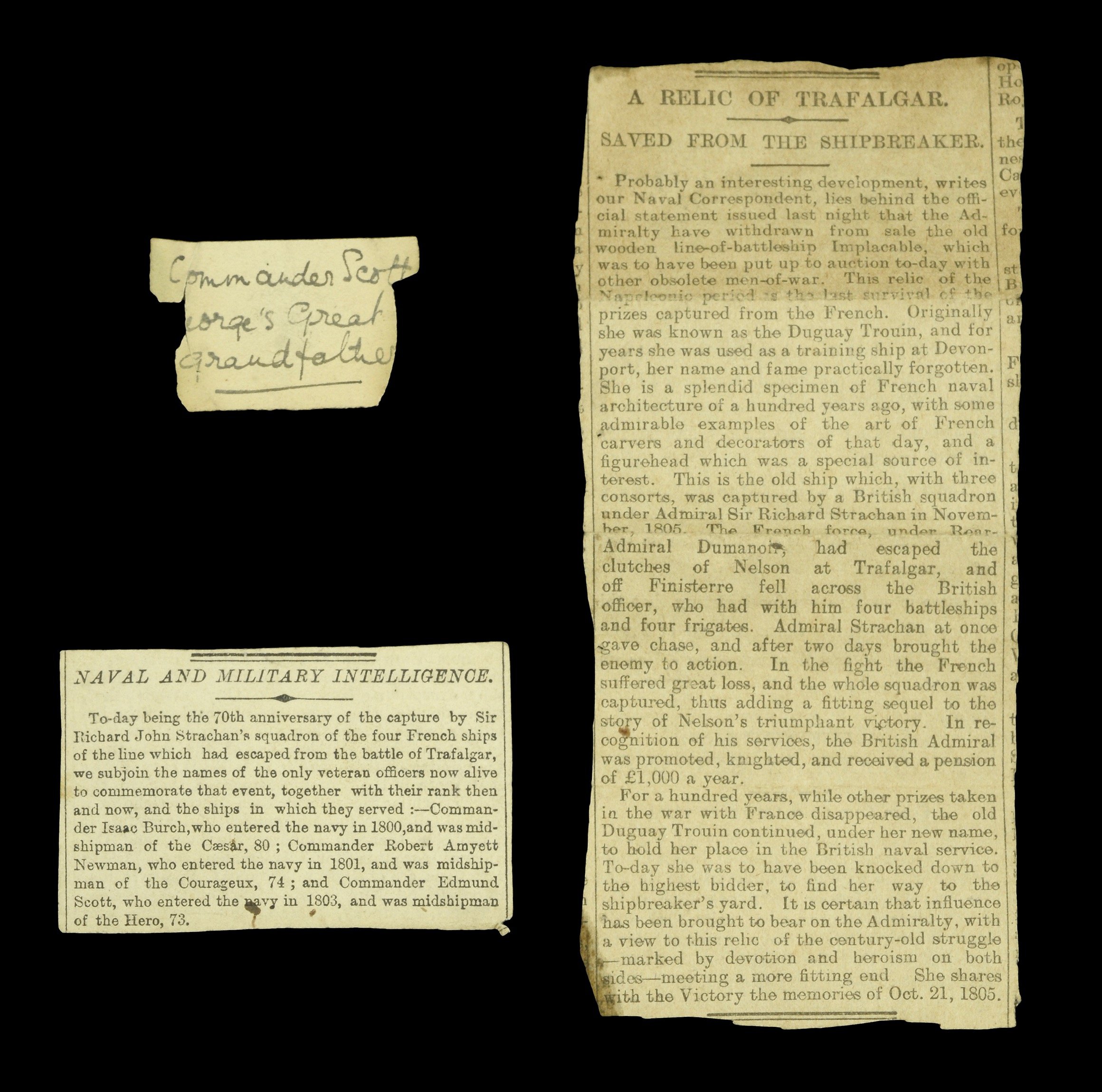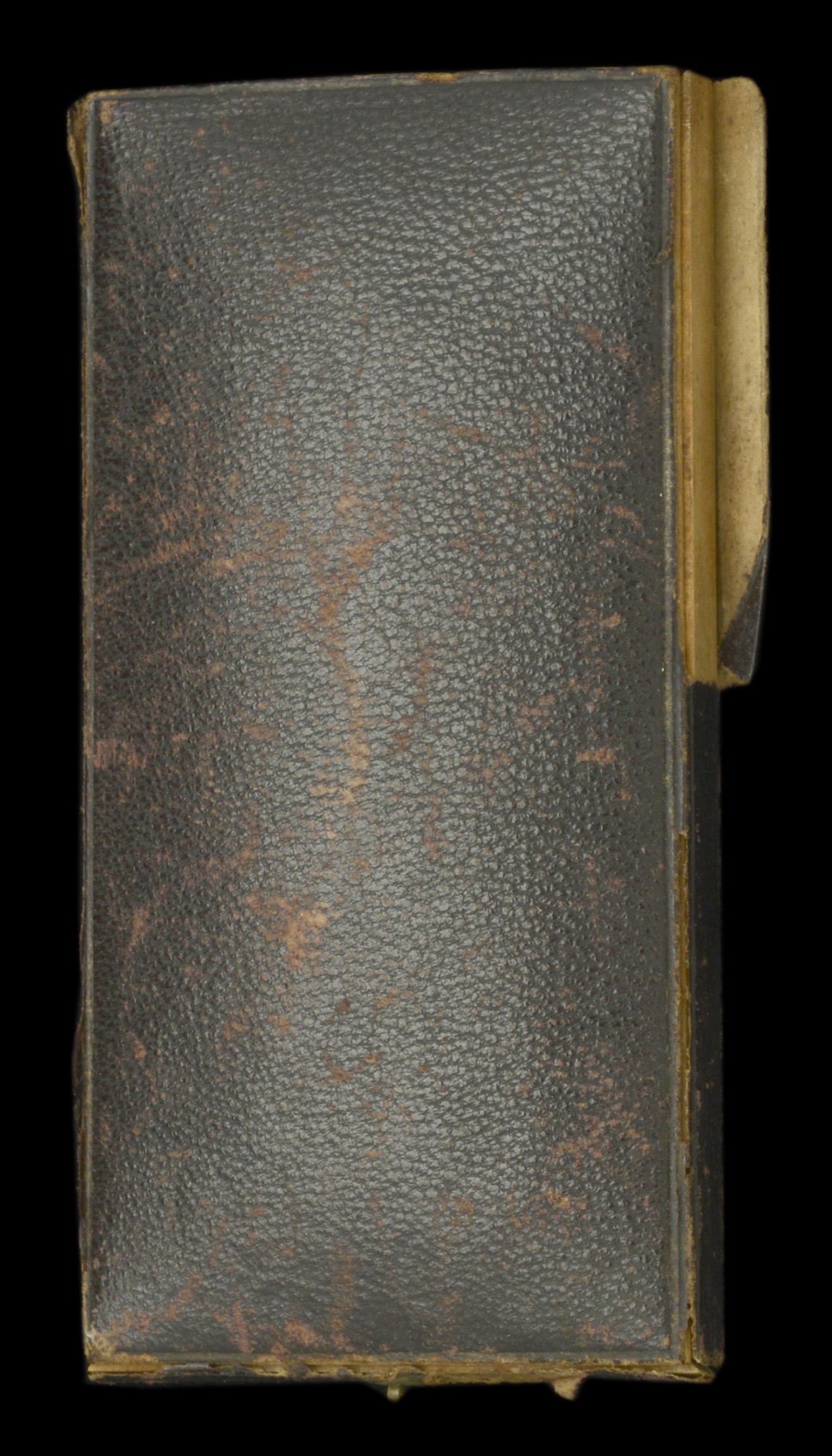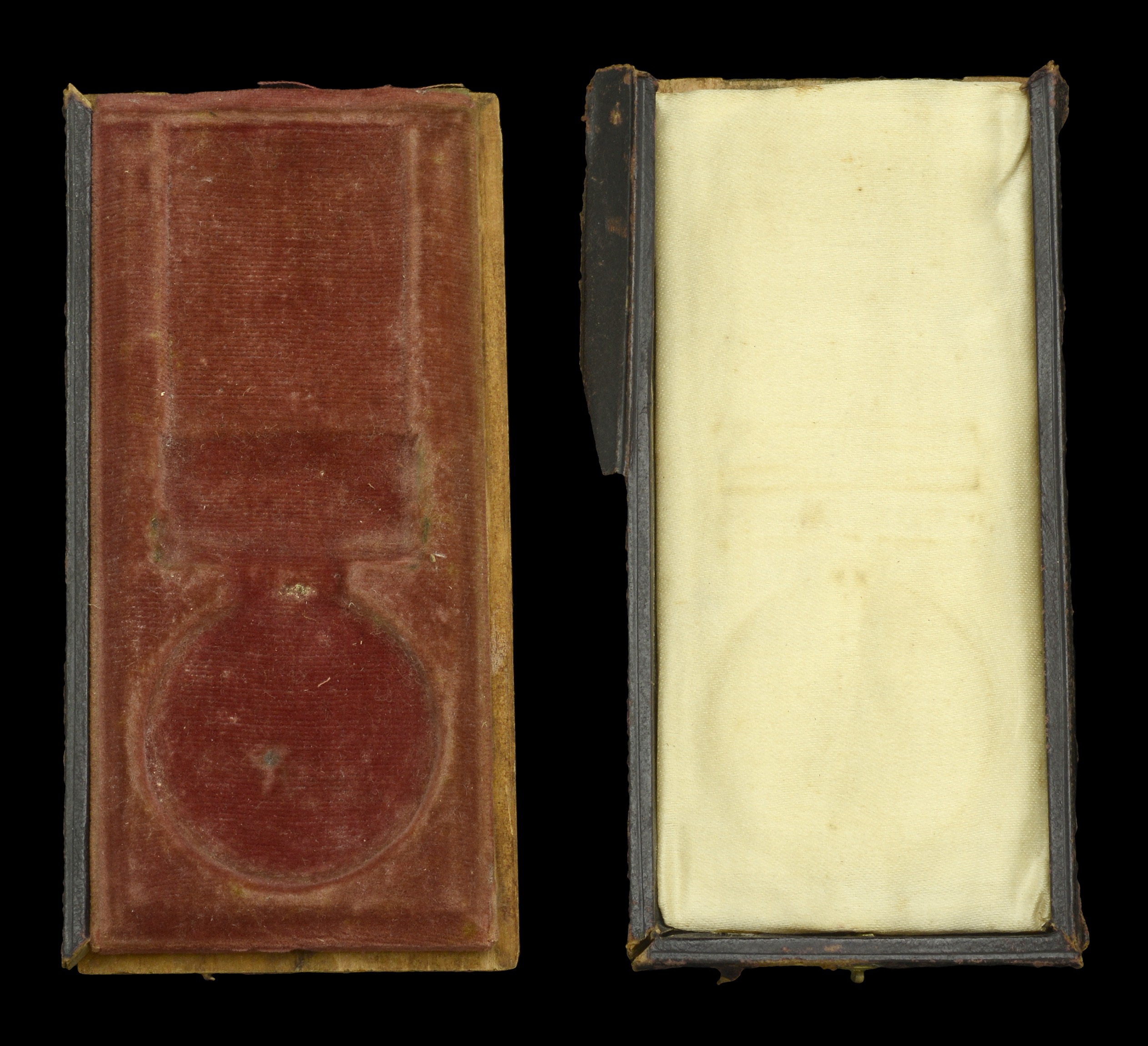The 2-clasp Naval General Service medal awarded to Commander Edmund Scott, Royal Navy, Midshipman in the Hero at Strachan’s action on 4 November 1805, and as Master’s Mate of the Bellerophon in the Baltic, he commanded a boat in action with a Russian flotilla of 8 gunboats and 12 merchantmen off Percola Point, on the coast of Finland, on 7 July 1809, when ‘his active, cool, determined and brave conduct obtained for him the admiration of his Captain.’ He was actively engaged in North America for three years as First Lieutenant of the Narcissus, serving in her boats at the capture of four vessels and the town of Hampton in 1812 and 1813; in 1814 with the boats of the Narcissus and Loire under his command he took the town of Benedict on the river Patuxent, besides a number of other boat actions Naval General Service 1793-1840, 2 clasps, 4 Novr 1805, 7 July Boat Service 1809 (Edmund Scott, Mate.) together with a very fine miniature portrait of Edmund Scott in oval gilt frame, the reverse with locket of hair, toned, extremely fine (2) £10,000-£14,000 --- Importation Duty This lot is subject to importation duty of 5% on the hammer price unless exported outside the UK --- --- Confirmed on the rolls as Midshipman of H.M.S. Hero on 4 November 1805, and as Master’s Mate of Bellerophon in command of a boat at the destruction of a Russian flotilla at Percola Point, Baro Sound, Finland, on 7 July 1809. 32 clasps issued for this boat service action. Edmund Scott was present as Midshipman of Hero in Calder’s action of 22 July 1805; in Sir R. Strachan’s action of 4 November 1805; and at the capture of Marengo and Belle Poule on 13 March 1806. As Mate and Midshipman of Bellerophon between 1808 and 1810 in the Baltic, he commanded a boat at the destruction of a Russian battery off Hango Head; at that of a second battery in Finland; and in action with a Russian flotilla of 8 gunboats and 12 merchantmen off Percola Point, on the coast of Finland, on 7 July 1809. At the latter action, ‘his active, cool, determined and brave conduct obtained for him the admiration of his Captain.’ He served at the siege of Cadiz in the Atlas, and as First Lieutenent of the Bustard during the defence of Sicily against Marshal Murat. From June 1812 until June 1816, he was actively employed on the North American station, for three years as First Lieutenant of the Narcissus. While in that frigate he served in her boats at the capture, on 25 November 1812, of the privateer Joseph and Mary of 4 guns and 73 men; and assisted in 1813 in taking the brig-of-war Viper of 12 guns, the privateer Revenge of 12 guns and 89 men, and the town of Hampton. He shared also in the attack upon Crany Island, and in June 1814 aided, in company with the Loire, in silencing the fire of a battery and in enforcing, off St Leonard’s Rock, the retreat of Commodore Barney’s flotilla. With the boats of the Narcissus and Loire under his command, he took, in the same month, the town of Benedict on the river Patuxent, possession of which he retained in face of a large body of cavalry and artillery, until he had cleared the storehouses of their contents. On 13 October 1814, he commanded the boats of his own frigate and the Dispatch brig at the cutting out, under heavy fire from a battery and of a troop of militia, of the U.S. Revenue-schooner Eagle, at anchor within half pistol-shot of Negro Head, Long Island Sound, where 8 of her 10 guns had been landed for her defence. The medal and miniature contained in old frame with ivorine label ‘Trafalgar Medal and Miniature of Commander Edmund Scott, R.N.’. Also with old fitted leather case (damaged) for the medal; two old news cuttings (one commemorating the 70th anniversary of Strachan’s action and stating Scott to be one of the last three surviving officers present); and a family letter written by his grandson with details of the actions for which the medal was awarded.





















